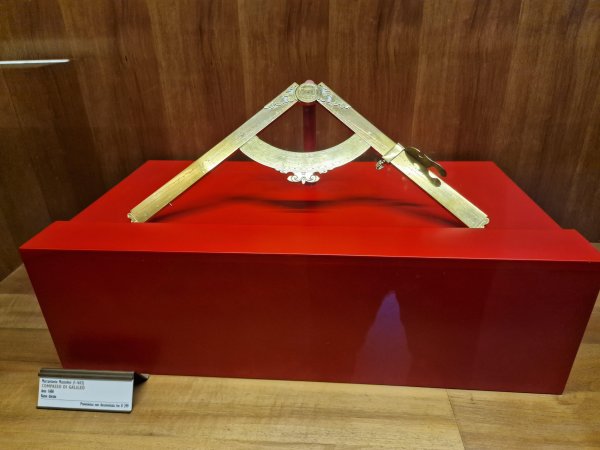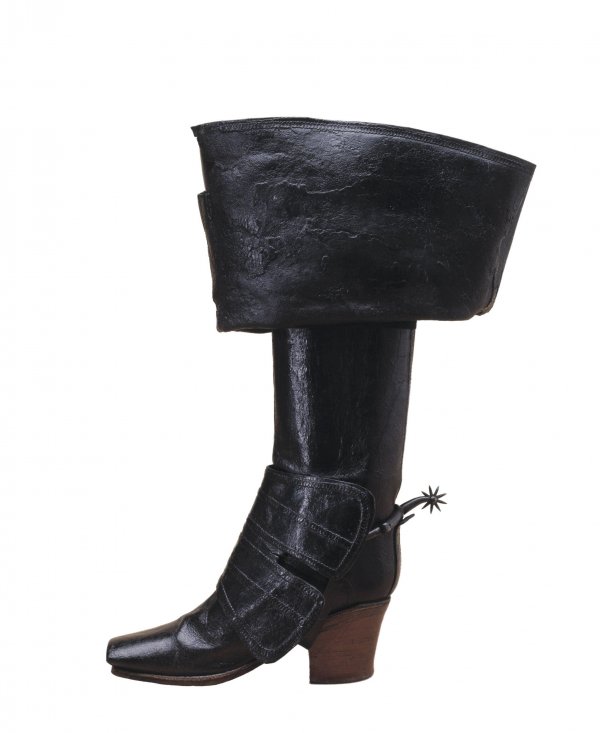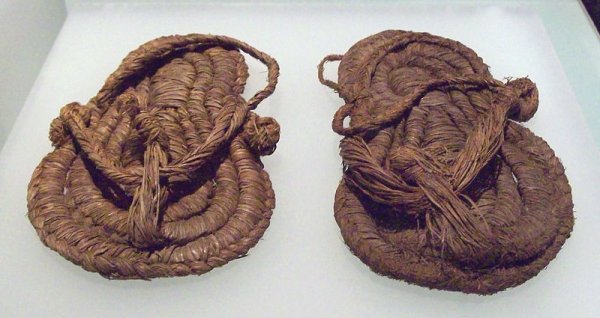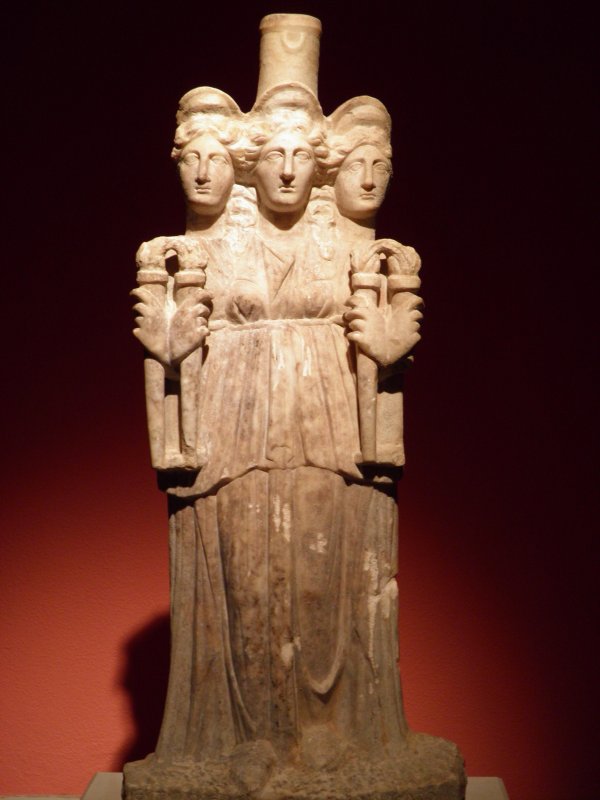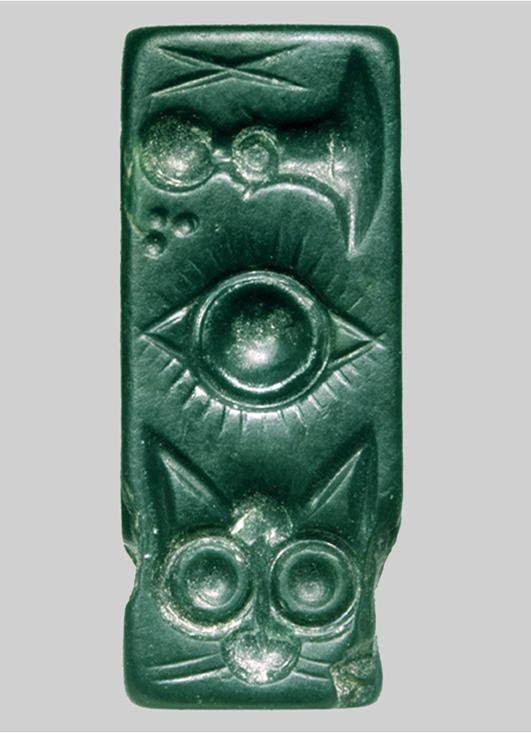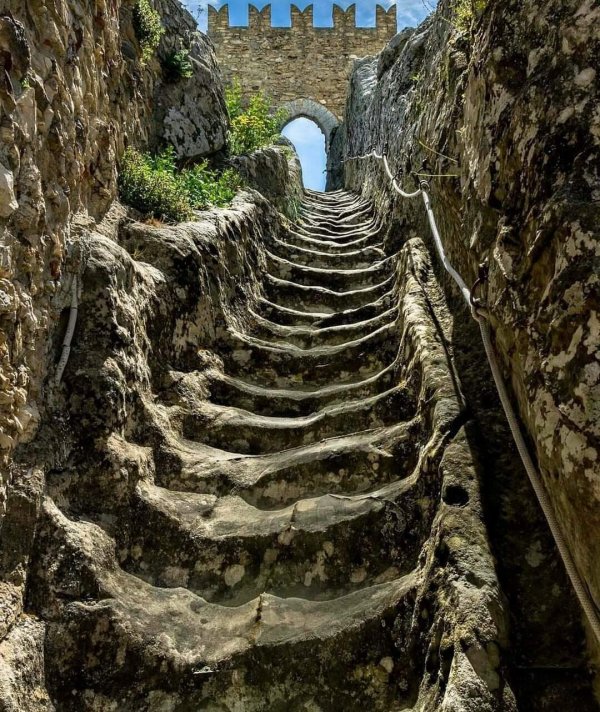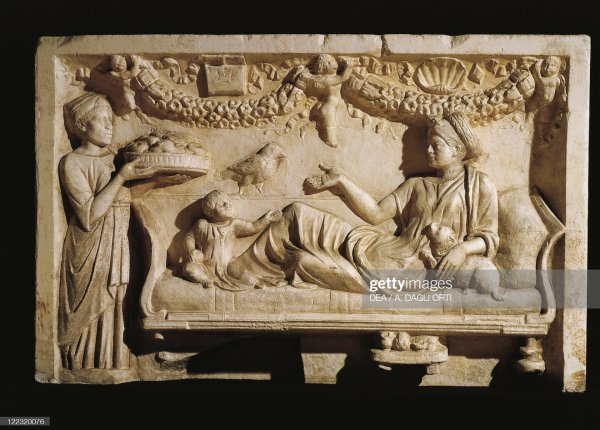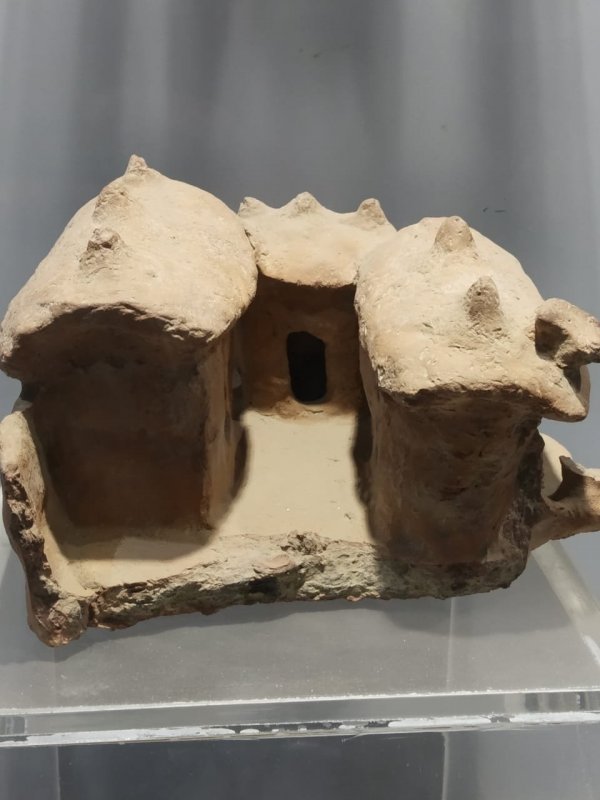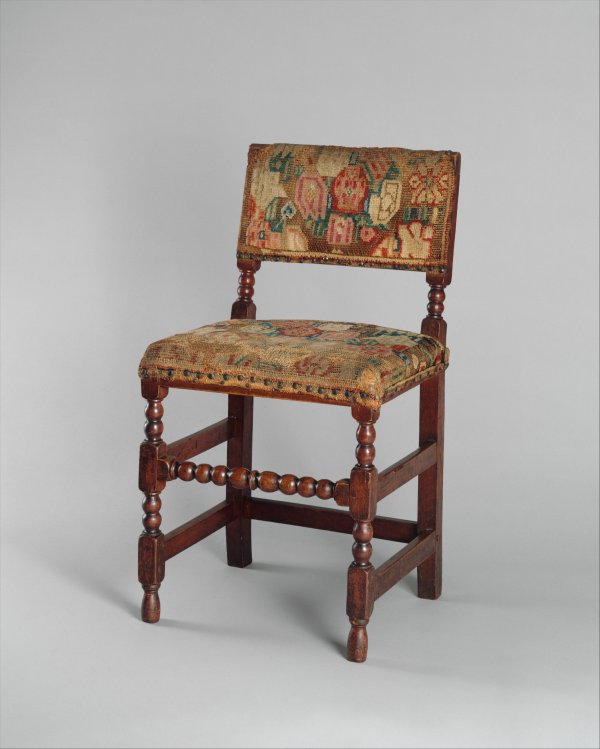White-ground terracotta object, possibly bobbin or yo-yo, with painting attributed to the Penthesilea Painter, Attica, Greece, ca. 460-450 BC. One side: Nike offers band of victory to a youth [below]. Reverse: Eros and youth [above]. Profile view in comments. Metropolitan Museum [4000x6000] [OC]
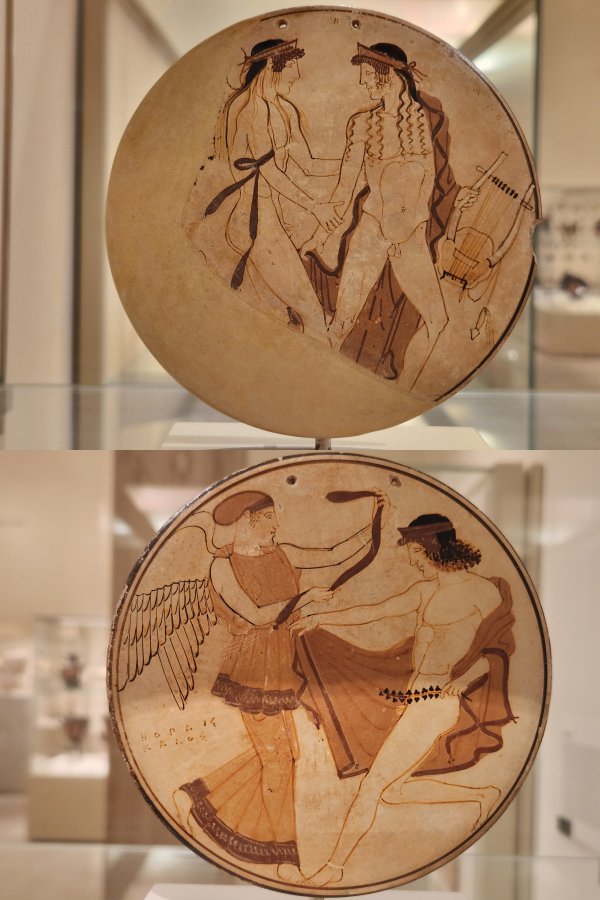
A Fisk iron coffin containing the body of a woman, named Sophia Catherine Nance, with a glass oval revealing her face. The woman died on January 1853 aged 28, and the coffin was found lying underneath the floorboards of Washington Street United Methodist Church in South Carolina [901x800]
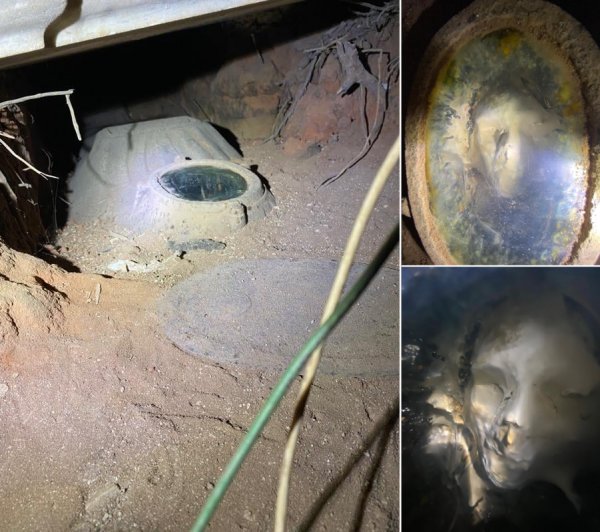
Geometric compass designed by Galileo Galilei in 1597. It allowed to quickly perform more than forty different types of complex geometric and arithmetic operations: e.g. to calculate the ballistics of artillery fire, redraw a map on a different scale or carry out exchange operations [4000x3000]
Photo of the compass exhibited at the Castello Sforzesco Museum in Milan.
